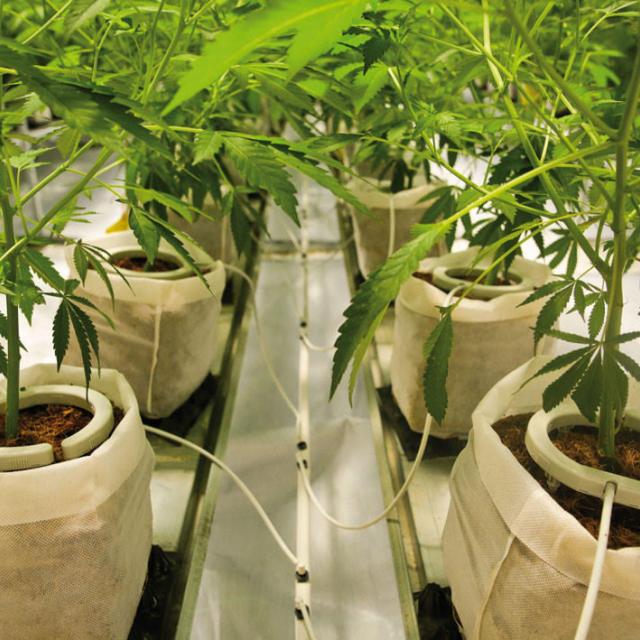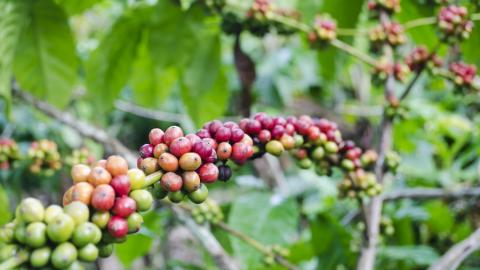A recent decree No. 2022-194 of 17th February 2022, published in the Official Gazette
of 18th February 2022, authorises, from 1st March 2022, the cultivation and production of cannabis for medical use in France, which until now has been forbidden although experimentation programmes relating to cannabis have been in place now for almost two years.

A recent decree No. 2022-194 of 17th February 2022, published in the Official Gazette
of 18th February 2022, authorises, from 1st March 2022, the cultivation and production of cannabis for medical use in France, which until now has been forbidden although experimentation programmes relating to cannabis have been in place now for almost two years.
Since 2019, some thirty countries in the world, among them a number of U.S. States and Canada, have authorised the therapeutic use of cannabis, including twenty-one from the European Union, as well as Switzerland, Norway, Israel and Turkey.
The studies have shown that the medical cannabis market is “growing annually by 30% globally and by 60% in Europe.” According to a study conducted by the Grand View Research organisation in 2017, the world market for cannabis used for medical purposes could reach 55.8 billion dollars in 2025, i.e., five times higher than in 2015.
Medical cannabis is a difficult crop
It is a relatively new crop, which is subject to trade regulations and special legislation. Until recently, cannabis was grown illegally so there is no standard relating to the optimum cultivation methods.
Cannabis is a crop that places great value on quality. For example, the cannabinoid content (CBD) as well as the aroma, colour and flower form, determine the profitability.
It is a production that is subjected to very stringent traceability and product standardisation throughout the year to ensure the final quality of the product.
This crop requires a precision irrigation system, which supplies precise quantities of water and nutrients to roots of each plant.
This results in savings on water, fertilisers and labour, while producing better quality yields.
In this article, we will provide recommendations for the irrigation and fertigation with the aim of helping to maximise the potential of an investment made in the production of medical cannabis.
The protocols provided are based on our vast experience worldwide.
The following guidelines relate to the cultivation of cannabis in a soilless medium.
As with all crops, we recommend that you adjust these guidelines according to the specific local conditions relating to the type of substrate and its water-holding capacity, climate, crop variety and performance targets.
Irrigation scheduling recommendations
Water is an essential parameter in the cultivation of medicinal cannabis. The plant water requirements are high but over-watering is harmful.
The volume of substrate, the chemical and physical features and the dimension and shape of the container have a major effect on the quantity and frequency of the irrigation. This should be taken into consideration in irrigation scheduling.
Cannabis plants pass through five stages to complete their growth cycle: stock plant, rooting of the cuttings, seedling stage, vegetative stage and Flowering. A specific fertigation protocol is required for the plant and each stage must be managed to obtain optimum results.
The new cuttings will develop roots because of the high level of humidity in the air, enabling them to become seedlings.
There are two alternatives for the rooting process: the rooting room and the propagator.
There is a short acclimatisation period for the new clones before they are moved into the vegetative room.
Fertigation via inverted sprinklers equipped with a technology involving the vibration of a needle placed in the centre of the flow path calibrated by a nozzle will give a good balance of nutrients for the new cutting. The jet spray obtained is broken down into uniform and perfectly distributed micro-droplets
At the vegetative stage, the plant adopts the form and force that will serve it later in the flowering stage.
The plants may become quite dense at the vegetative stage (the plants are relatively small and there is no competition for the light).
At the flowering stage, the flowers become the main source of nutrient absorption and all the plant’s attention is focused on helping the flowers to reach their full potential.
Monitoring this procedure closely will ensure that the plants are healthy with maximum yields.
In a container, as there is limited volume, frequent irrigation would be beneficial. However, the irrigation run time must be moderated (> 5 mins).
If you are working with a containerised solution, the duration of the irrigation pulse can be even shorter.
Recent studies have compared the effect of the length of the irrigation intervals, long or short, on the vegetal biomass and the cannabinoid content.
Cuttings of the Freud variety (high THC content) have been grown under two different irrigation systems and the vegetal biomass, weight of the dried flowers and cannabinoid content were measured. Irrigation in the two groups was triggered by a predefined moisture level of 28% (vol) for the short intervals and 15% (vol) for the long intervals.
The results have revealed that the vegetal biomass, weight of the dried flowers and THC levels were slightly higher for short interval applications whereas the CBD was slightly lower. Water consumption was greater than 10% for short irrigations, in line with more rapid growth and a higher level of biomass.
Adequate drainage is essential for preventing the salinisation of the substrate, which should be around 30%.
Always ensure that the EC at the outlet is greater than the EC at the inlet by about 0.5 mS/cm.
During the last 3 days before harvest, it is recommended to conduct a rinsing procedure (irrigation without fertiliser), maintaining a stable pH during irrigation.
For a crop of medical cannabis grown in a container, it is obligatory to work with self-regulating drippers, with a flow rate of 21/h to 81/h, and ideally with drippers equipped with an anti-drain (CNL) option.
One dripper per pot is required but the dividing-up of the flow emitted by the dripper must be achieved via a flow divider placed on the surface of the substrate.
A semi-circular manifold placed on the surface of the container, provided with 4 to 8 drippers depending on the diameter of the pot, allows for an excellent distribution of the dripper’s flow and offers ease of installation and use.
The connection between the dripper and the semi-circular flow distributer is achieved by 3 x 5 mm micro-tubing.
With this device, the wetting by contact and the uniform distribution of the water is achieved throughout the whole volume of the container, thus the substrate becomes optimised via the rooting system.
Fertigation recommendations
With a soilless substrate, the concentration is important, and not the quantity.
It is strongly recommended that fertiliser be applied at each irrigation.
It is necessary to determine the nutrients required according to the different stage of growth. There are indicative tables showing the concentration of elements to be complied with, for the different growth stage.
The EC thresholds vary between 1.2-1.6 mS/cm at the plant stock, seedling (hardening up) and vegetative growth stage and 1.6-2.1 n S/cm at the flowering stage.
Do not fertilise at the rooting stage but maintain the moisture content around the cutting at 90 to 95%.
Check and adjust the pH to ensure that it remains in the range of 5.8 – 6.2.
It is essential to conduct continuous chemical analyses of the drainage and irrigation water.
Avoid salinity problems. If salinity should occur, wash the substrate with water that has a stable pH until the required EC level is reached in the drainage.
To have efficient fertigation, we recommend that you work with multi-channel stations which operate by using the venturi principle.
These injection stations allow for an improvement of both the yield and quality of the crops, by ensuring that the EC and pH is precisely controlled.
The stations, using only one single pump for mixing and injecting the nutrients, allow for energy consumption to be minimised while saving on labour, water and fertilisers.
The stations equipped with analogue injection valves, allow for the set EC/pH values to be reached rapidly and, therefore, the stabilisation time and the fertigation cycles are short.
Apart from the management of irrigation and fertigation, the success of a soilless medical cannabis cultivation project must take into account the lighting and control of the screens.
Light plays two roles with the cannabis crop
In first is photoperiodic lighting – to prolong the length of the day for the plant.
The vegetative stage has a schedule of 18 hours of light and 6 hours of darkness.
The flowering stage has a schedule of 12 hours of light and 12 hours of darkness.
The second is photosynthetic light – for maintaining the best light spectrum for the plant’s needs.
The display screens are an essential factor for controlling the climate inside the greenhouse and guiding the plants in the required direction.
For all irrigation soilless projects for medical cannabis, it is important to have the support of competent partners who ensure that the structure of the project is optimised at the design stage.

